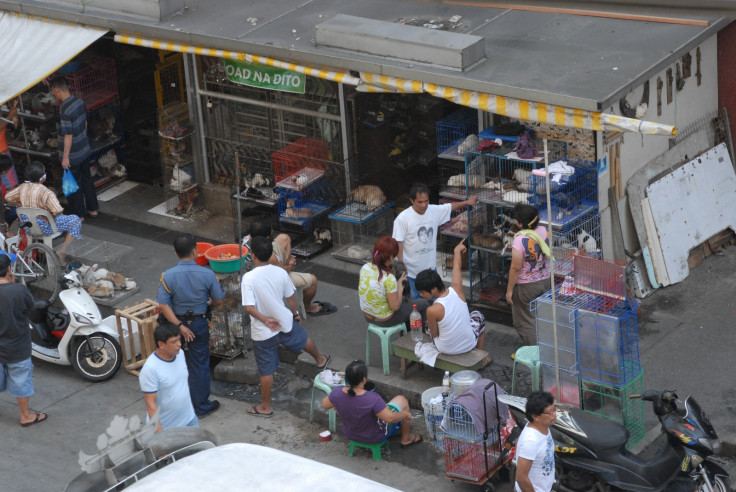Philippines: Two new lizard species discovered in Manila black market for sale as exotic pets
Two new species of lizard have been discovered by chance after being traded on the black market in the Philippines as exotic pets.
Rafe Brown, from the University of Kansas, has spent years cataloguing and conserving fauna in the Philippines.
Describing the country's black market for exotic animals as "bizarre and grotesque", he was working undercover in one of Manila's illegal pet stores when he came across the new species.
The illegal trade of animals in Manila includes some of the most endangered species. Many pet stores have them hidden behind the scenes, while major international smuggling rackets are run from the capital.
"The operations involve everything from sea turtles, to ivory, to tiger parts and rhino horns," Brown said. "These involve private individuals, pet store owners, politicians, zookeepers and corrupt government officials.
"Many animals are sold as pets and 'captive breeding' stock and zoo specimens. Many are sold as food, many are slaughtered and sold as parts for 'medicinal' purposes and aphrodisiacs, and many are huge, high-stakes status symbols for the wealthy elite - such as tigers, monkeys and Komodo dragons."

While working in the Philippines, Brown would visit pet markets, bush-meat stands and other outlets where lizards were sold as pets or food. They would speak to traders and ask if they had "anything else" hidden away.
The team would often buy the reptiles to analyse them to help conservationists and police. By creating genetic databases, they could have a legal means of establishing an animal's provenance, so traders could not lie about where the creature came from.
While analysing two species of water monitor lizards, they realised they were looking at two animals previously unknown to science.
Their descriptions have now been published in the journal Zootaxa, while an analysis of Manila's illegal pet and meat trade has been published in Biological Conversation.

Brown said: "Both are gorgeous, black-and-white or black- and yellow-coloured animals. They are dark in general appearance with bright speckling of white or yellow spots arranged in rows and stripes around the body, as if wearing shining necklaces.
"One gets up to a little over three feet in length, and the other is somewhat larger at about four feet. They're monitor lizards, so they're alert, with large eyes, continually flicking long tongues, which they 'smell' with, and they're generally very alert and look quite intelligent."
They did not realise they were two new species straight away because they appear very similar to other known species. They have been named Varanus dalubhasa and Varanus bangonorum.
"They were confused with species that were physically very similar in scale numbers, shapes, colour patterns and body size. But even though they looked similar, it now makes perfect sense to us in hindsight that they should be distinct and considered separate species because they come from different areas -- a separate island in one case and an isolated peninsula in another. Both have been isolated for considerable geological time."
© Copyright IBTimes 2025. All rights reserved.






















